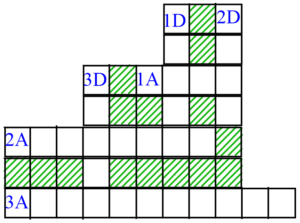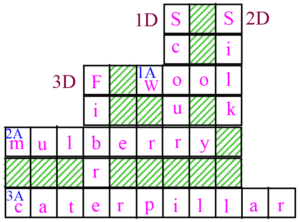Table of Contents
NCERT Solutions for Class 7 Science Chapter 3 Fibre to Fabric Updated for 2024-25
Subject specialists have designed NCERT solutions for Science Class 7 Chapter 3 which includes thorough solutions for reference. These NCERT solutions are updated according to the latest CBSE syllabus for 2024-25 and are provided in easy language for understanding. Tips and tricks are also provided.
NCERT solutions class 7 science ch 3 are provided so a student can clear his doubts and get help with a deep understanding of the concept. Also, you can refer them to make the chapter notes and revisions notes. PDF of this can also be downloaded from the website.
NCERT Solutions for Class 7 Science Chapter 3 PDF Download
Get ahead in your science studies with the NCERT Solutions for Class 7 Science Chapter 3 PDF download. This comprehensive guide offers precise answers and detailed explanations to aid your understanding of the chapter’s concepts. Aligned perfectly with the NCERT curriculum, it serves as a vital resource for achieving success in exams. Download the solutions of NCERT class 7 science chapter 3 Fibre to Fabric pdf now to enhance your learning experience.
Access NCERT Solutions for Class 7 Science Chapter 3 Question Answer
Here are all the class 7th science chapter 3 Fibre to Fabric question answer from NCERT textbook
Class 7 Science Chapter 3 Question Answer of Textbook Exercise
Exercise Page No. 24
1. You must be familiar with the following nursery rhymes:
- “Baa baa black sheep, have you any wool”
- Mary had a little lamb, whose fleece was white as snow”.
Answer the following:
- Which parts of the black sheep have wool?
- What is meant by the white fleece of the lamb?
Ans:
- The hairy skin called fleece has wool in black sheep.
- White fleece means hairy skin which is white in color.
2. The silkworm is
- a caterpillar,
- A larva – choose the correct option.
- a
- b
- both a and b
- neither a nor b
Ans: iii) both a and b
3. Which of the following does not yield wool?
- yak
- camel
- goat
- woolly dog
Ans: iv) Woolly dog
4. What is meant by the following terms?
- Rearing
- Shearing
- Sericulture
Ans :
- Rearing: Rearing of animals means taking care of economically useful animals by managing___their breeding, feeding, medical care, etc for obtaining one (or) more of their product useful for___ human beings”. Eg: Apiculture, Sericulture
- Shearing: The process of removing the fleece of the sheep along with a thin layer of skin is____called shearing.
- Sericulture: The rearing of silkworms for obtaining silk is called sericulture.
5. Given below is a sequence of steps in the process of wool. Which are the missing steps. Add them.
Shearing, …………….., Sorting, …………….., …………….., ……………..,
Ans: Shearing, Scouring, Sorting, picking out of burrs, dying (coloring), rolling.
6. Make sketches of the two stages in the life history of the silk moth which are directly related to the production of silk.
Ans :
7. Out of the following, which are the two terms related to silk production? Sericulture, flori culture, moriculture, Apiculture, Silviculture
Hints :
i) Silk production involves the cultivation of mulberry leaves and rearing silkworms
ii) Scientific name of mulberry is Morus alba.
Ans : Sericulture, moriculture
8. Match the words of Column I with those given in column – II
| Column-I | Column-I |
| 1. Scouring | (a) Yields silk fibres |
| 2. Mulberry leaves | (b) Wool-yielding animal |
| 3. Yak | (c) Food of silkworm |
| 4. Cocoon | (d) Reeling |
| (e) Cleaning sheared skin |
Ans:
| Column-I | Column-I |
| 1. Scouring | (e) Cleaning sheared skin |
| 2. Mulberry leaves | (c) Food of silkworm |
| 3. Yak | (b) Wool-yielding animal |
| 4. Cocoon | (a) Yields silk fibres |
9. Given below is a crossword puzzle based on this lesson. use hints to fill in the blanks shapes with letters that complete the words.
D: Down
1) Thorough washing
2) Animal fiber
3) Long thread-like structure

Ans: Across
1) Keeps warm
2) Its leaves are eaten by silkworms
3) Hatches from the egg of a moth

Importance Topics Covered in class 7 Science Chapter 3 Fibre to Fabric
- Fibers
- Types of fibers
- Silk
- Wool
- Sources of wool
- How to process wool fiber?
- Chapter 1 Nutrition in Plants
- Chapter 2 Nutrition in Animals
- Chapter 3 Fibre to Fabric
- Chapter 4 Heat
- Chapter 5 Acids, Bases, and Salts
- Chapter 6 Physical and Chemical Changes
- Chapter 7 Weather, Climate, and Adaptations of Animals to Climate
- Chapter 8 Winds, Storms, and Cyclones
- Chapter 9 Soil
- Chapter 10 Respiration in Organisms
- Chapter 11 Transportation in Animals and Plants
- Chapter 12 Reproduction in Plants
- Chapter 13 Motion and Time
- Chapter 14 Electric Current and Its Effects
- Chapter 15 Light
- Chapter 16 Water: A Precious Resource
- Chapter 17 Forests: Our Lifeline
- Chapter 18 Wastewater Story
NCERT Solutions for Class 7 Science Chapter 3 Fibre to Fabric Overview
Students can use these NCERT Solutions for any quick revisions of class 7 Science Concepts.
- Fibres – Fine, long, filaments or continuous threads are obtained from the animals and plants. There are 2 types of fiber. They are – Plant fiber and Animal fiber.
- Silk – Silk, and woolen are the usual fibers received from animals. Silk is received from the silkworms whilst, wool is fetched from the goat, sheep, and yak. Therefore, wool and silk are animal fibers.
- Animal fiber – Hair of alpaca, llama and camel are manufacture to produce the wool. Generally, in India, sheep are used for getting the wool. The hair of the sheep is shaved off from the body, cleansed, dried, sorted, coloured, gyrated and woven to get the wool.
- Sources of wool – Wool is obtained from yak, Angora goat, sheep, goat, camel, Alpaca etc.,
About Infinite Learn Solutions
Infinite Learn’s mission is to create world-class learning content for students. We are focused on raising the students learning abilities. These Solutions have been structured very carefully to give several benefits to the students that utilize these study materials. That is why these are crafted by subject matter experts to focus on the concept and its explanation.
For any type of support related to the NCERT Solutions for Class 7 given here, students can approach our support team who will help clear all their doubts. Students can also check out Infinite Learn r a more efficient learning experience.
FAQs on NCERT Solutions for Class 7 Science Chapter 3 Fibre to Fabric
Why choose Infinity Learn for NCERT solutions for Class 7 Science Chapter 3?
Infinity Learn offers expertly crafted NCERT solutions for Class 7 Science Chapter 3, ensuring students grasp key concepts easily and thoroughly. Our solutions help clarify doubts and strengthen foundational knowledge effectively.
What is Chapter 3 of Science Class 7?
Chapter 3 of Class 7 Science is titled Fibre to Fabric. It explores the origins of fibres, their classification, and the process of making fabric from these fibres.
What are natural fibers in Class 7?
Natural fibers are substances produced by plants and animals that can be spun into filament, thread, or rope. In Class 7, students learn about various examples like cotton, wool, and silk.
What is fibre?
Fibre is a material usually derived from plants or animals that is spun into threads and used to make textiles. Examples include cotton from plants and wool from animals.
Why is scouring important in Class 7?
Scouring is important in Class 7 Science as it involves cleaning wool or other natural fibers to remove dirt and natural oils, preparing them for the process of making fabric.









